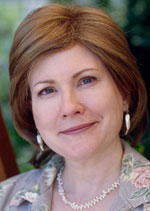Last year, a group of parishioners and our pastor embarked on an enviously intriguing pilgrimage to Lourdes, France, and along the Camino de Santiago, or Way of St. James, in Spain, and then went on to Fatima, Portugal. The itinerary seemed ideal for religious education and spiritual renewal. But it also sounded exhausting for someone like me, who has multiple serious health problems.
The itinerary included lots of early mornings, long bus rides and walking (no doubt, lots of stairs). Those and other factors, including being untethered from my home team of doctors, made it impossible for me to consider going. I was not alone. Other health-challenged parishioners could not travel, either.
So, our pastor put together a “virtual pilgrimage” for us. It turned out to be a wonderful experience.
Our pastor invited everyone who was interested, including those who were not traveling, to a series of prepilgrimage meetings, where he talked about the route and other information about the trip.
[hotblock]
He made and distributed pilgrimage guides to each of us. The guides gave a day-by-day explanation of where the tour would go and what was on the agenda. Also included in the guides was space for personal journaling, associated prayers and thoughts about saintly sites and church history, along with resources in case you wanted to learn more.
When the pilgrims embarked on their trip, Father Tom Welbers, our pastor, also provided us all (travelers and armchair pilgrims) with email addresses for one another. Throughout the pilgrimage, those of us who stayed home exchanged emails with those on the physical journey. On a blog, Father Tom wrote journal-like posts that told of the experiences and insights gleaned along the way.
Although I did not have the “real” experience of site tours, candlelit processions or Masses celebrated in faith-drenched locales, I was blessed by my virtual pilgrimage in many ways that still resonate with me.
For example, I did not know each pilgrim before the event, but got to know many new fellow parishioners throughout the experience — new friends who are still very present in my life. I enjoyed the structure of following along with the journey of faith that accompanied the time-sensitive itinerary. It was a refreshing departure from my usual devotions.
The virtual pilgrimage also opened up new spiritually deepening possibilities for me. There are and will be many times when I cannot travel, but I can create or find a “virtual pilgrimage” and still take a profound faith odyssey without exposing myself to potentially health-compromising situations.
Since my parish’s pilgrimage, I’ve discovered other online resources that provide similar, or even more enhanced, virtual pilgrimage experiences.
If you start your online search by looking for a particular holy site, whether in Europe, the United States, Asia or elsewhere, and add the words “virtual pilgrimage,” you can find a variety of resources, including some that begin on a specific day or that are more flexible and available whenever the virtual pilgrim is ready to start. They are free (another benefit for financially constrained budgets).
Besides the joy of “walking” with the saints through a specific pilgrimage, the knowledge that we are still able to join in prayer and devotion with fellow believers throughout the world helps take the oft-felt sting of isolation and loneliness away from those of us who might be physically removed from travel.
It is a blessing to know that we need not say no to the possibility of pilgrimage, but rather, Where can my faith take me next?
PREVIOUS: Becoming a nation of service and a better America
NEXT: The shadow of Peter fell on America last week




I am trying to get back to my faith, I think a pilgrimage to some places of significant happenings of faith would help to restore me. But I cannot afford to go to many of these places. I am reading Where Christ is Present by John Montgomery and his book has helped me refresh my faith and get back to where I want and need to be. This book has been a great asset for me!